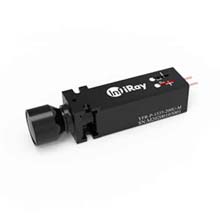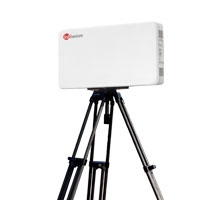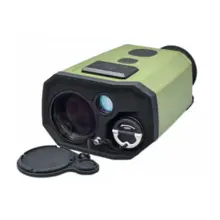The Power of Thermal Cameras in Nighttime Rescues and Emergency Situations

In today's fast-paced world, technology continues to advance and improve various aspects of our lives. One remarkable technological innovation that has made a significant impact in nighttime rescues and emergency situations is the thermal camera. Today, we'll delve into the critical role thermal imaging cameras play in ensuring safety and efficiency during nighttime operations.
I. Exploring Thermal Cameras
A. How Does A Thermal Camera Work
Thermal imaging cameras operate on the principle that all objects emit infrared radiation, even in complete darkness. These cameras have special sensors called microbolometers that detect and measure this radiation. The data is then translated into a visual representation, with different colors or shades representing varying temperatures.
B. Differences between Thermal Imaging and Traditional Cameras
Darkness significantly impairs human vision, making it difficult to locate missing persons, identify potential hazards, or assess the extent of a disaster. Nighttime rescues and emergency situations present unique challenges and dangers. Unlike traditional cameras that rely on visible light, thermal cameras do not need any light source to function. They are capable of seeing through smoke, fog, and darkness, making them ideal for nighttime and low-visibility conditions. Therefore, the use of advanced technologies like thermal imager becomes crucial to address these challenges effectively.

C. Advantages of Thermal Cameras
1. Heat Detection Capabilities
Thermal cameras excel at detecting and highlighting sources of heat, including humans and animals. This feature is particularly helpful in locating individuals in emergency situations, such as earthquakes, avalanches, or wilderness searches.
2. Versatility in Various Environments
Thermal imaging cameras are versatile and can operate effectively in a wide range of environments, including forests, urban areas, bodies of water, and industrial settings. Their adaptability makes them indispensable tools for diverse rescue and emergency scenarios.
3. Non-Visibility Dependent
One of the most significant advantages of thermal imaging cameras is their independence from visible light. They can "see" temperature variations in complete darkness, smoke-filled environments, or situations with poor visibility, providing crucial information to responders.

II. Applications of Thermal Cameras in Nighttime Rescues
A. Search and Rescue Operations
1. Locating Missing Persons
In cases of lost hikers, missing children, or individuals stranded in remote areas, thermal imaging cameras help search teams quickly pinpoint the heat signatures of those in need, reducing search times and increasing the chances of survival.
2. Finding Survivors in Disaster Zones
During natural disasters like earthquakes, hurricanes, or floods, thermal cameras aid rescue teams in identifying survivors trapped under rubble or in flooded areas. These cameras can detect the heat emitted by survivors, guiding rescuers to their location.

B. Firefighting and Fire Rescue
1. Identifying Hotspots
Firefighters use thermal cameras to identify hidden hotspots in burning structures. This information helps them direct their efforts more effectively and prevent potential structural collapses.
2. Ensuring Firefighter Safety
Thermal cameras enable firefighters to see through thick smoke and locate fellow team members in perilous situations, enhancing overall safety during fire rescue operations.
C. Enforcement and Security
1. Tracking Suspects
Enforcement agencies employ thermal imaging to track suspects, especially in pursuits that occur at night or in densely populated areas where visibility is limited.
2. Monitoring Perimeter Security
Thermal imaging is utilized to enhance perimeter security at critical facilities, industrial sites, and borders. They can detect intruders attempting to breach security fences, providing early warnings to security personnel.

III. Benefits of Thermal Cameras in Emergency Situations
A. Enhanced Situational Awareness
1. Seeing Through Smoke and Darkness
In scenarios involving fires or accidents, thermal cameras cut through smoke and darkness, giving responders a clear view of the situation and any potential dangers. Can a thermal imager see through smoke or fog?
2. Identifying Threats and Obstacles
Thermal cameras help identify hidden threats, such as individuals in distress, allowing security personnel to respond swiftly and appropriately.
B. Rapid Response and Decision-Making
1. Minimizing Response Time
The ability to quickly locate and assess situations with thermal cameras can significantly reduce response times, leading to more successful outcomes in emergencies.
2. Optimizing Resource Allocation
By providing real-time data and visuals, thermal imaging cameras enable responders to allocate resources more efficiently, ensuring that personnel and equipment are directed where they are needed most.
C. Safety and Risk Mitigation
1. Reducing Hazards for First Responders
Thermal cameras help protect first responders by providing early detection of potential hazards, allowing them to navigate dangerous environments more safely.
2. Preventing Accidents and Collisions
In situations involving multiple vehicles or responders, thermal imaging can prevent accidents and collisions by enhancing visibility, even in low-light conditions.

IV. Technological Advancements in Thermal Imaging Cameras
A. Improved Resolution and Sensitivity
Advancements in sensor technology have led to thermal cameras with higher resolution and greater sensitivity, enabling more detailed and accurate thermal imaging.
B. Integration with Other Technologies
Thermal cameras are increasingly integrated with other technologies such as drones, artificial intelligence, and augmented reality, expanding their capabilities and potential applications.
Thermal cameras have proven to be indispensable tools in nighttime rescues and emergency situations. Their ability to detect heat signatures in challenging environments, enhance situational awareness, and contribute to rapid response and decision-making has saved countless lives and minimized risks for first responders. As technology continues to evolve, thermal imaging will play an even more significant role in safeguarding communities and individuals in times of crisis.

















